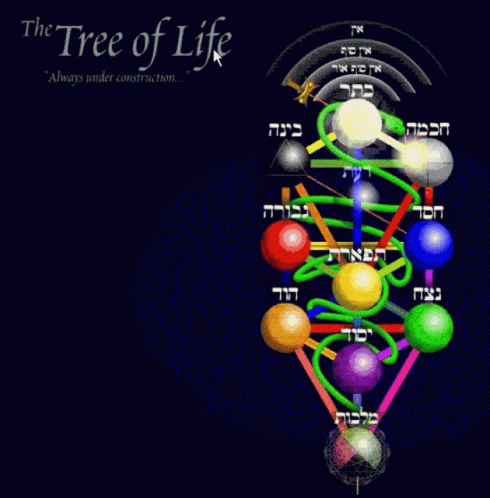Pocas cosas en el mundo suelen ser tan símbolo de vida como un árbol. Es difícil pensar en algo negativo asociado a los árboles. Más bien, se suele fomentar su siembra para ayudar al mundo. Sin embargo, bíblicamente es muy conocido el relato de la manzana del árbol que tanto daño hizo ¿Se equivoca la Biblia o hay algo más...? En esta publicación, les quiero hablar del Árbol de la Vida, según algunos, la matriz de la vida y de la creación de este mundo.
Click here for the English Version
Few things in the world are often as symbolic of life as a tree. It's hard to think of anything negative associated with trees. Rather, their planting is often encouraged to help the world. However, biblically, the story of the apple tree that did so much damage is well known. Is the Bible wrong or is there more to it...? In this publication, I want to talk about the Tree of Life, according to some, the matrix of life and the creation of this world.
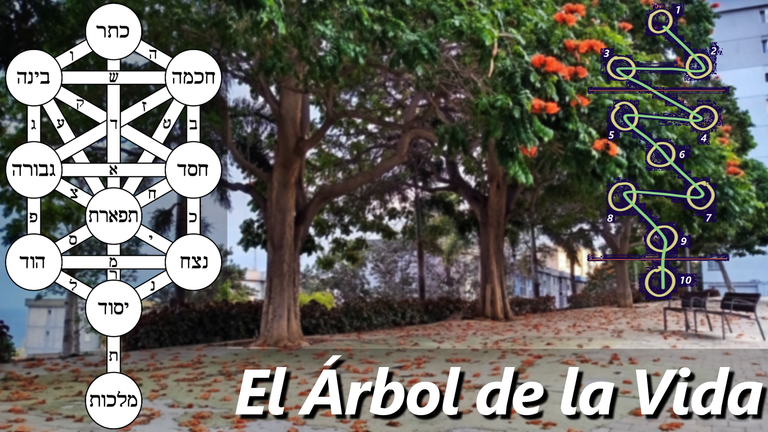
Es curioso que el Árbol de la Vida sólamente se menciona dos veces en la Biblia: una en el principio (Génesis) y otra al final (Apocalípsis). El famoso pecado se asocia al Árbol del Conocimiento del Bien y el Mal, pero ¿Se trata del mismo árbol? Esto quizás lo abordaremos en otra ocación ya que es un tema extenso, pero "técnicamente" no sería el mismo árbol. Ahora, vamos a conocer más del Árbol de la Vida.
El mundo está repleto de imágenes y representaciones de Adán y Eva comiendo de un fruto de un árbol, pero pocos conocen la imagen o símbolo que representa al Árbol de la Vida según quienes han estudiado a profundidad la sabiduría de los escritos bíblicos. Si bien es una imagen que parece sacada de un diagrama de ingeniería eléctrica, es así como ha sido representado desde hace varios siglos. Esta imagen parece remontarse a inicios de la era medieval, aunque su origen como tal y su formación sería de mucho tiempo atrás.
Click here for the English Version
It is curious that the Tree of Life is only mentioned twice in the Bible: once in the beginning (Genesis) and once at the end (Revelation). The famous sin is associated with the Tree of the Knowledge of Good and Evil, but is it the same tree? Perhaps we will address this on another occasion since it is an extensive subject, but "technically" it would not be the same tree. Now, let's learn more about the Tree of Life.
The world is full of images and representations of Adam and Eve eating fruit from a tree, but few know the image or symbol that represents the Tree of Life according to those who have studied in depth the wisdom of the biblical writings. Although it is an image that seems to be taken from an electrical engineering diagram, this is how it has been represented for several centuries. This image seems to date back to the beginning of the medieval era, although its origin as such and its formation would be long ago.
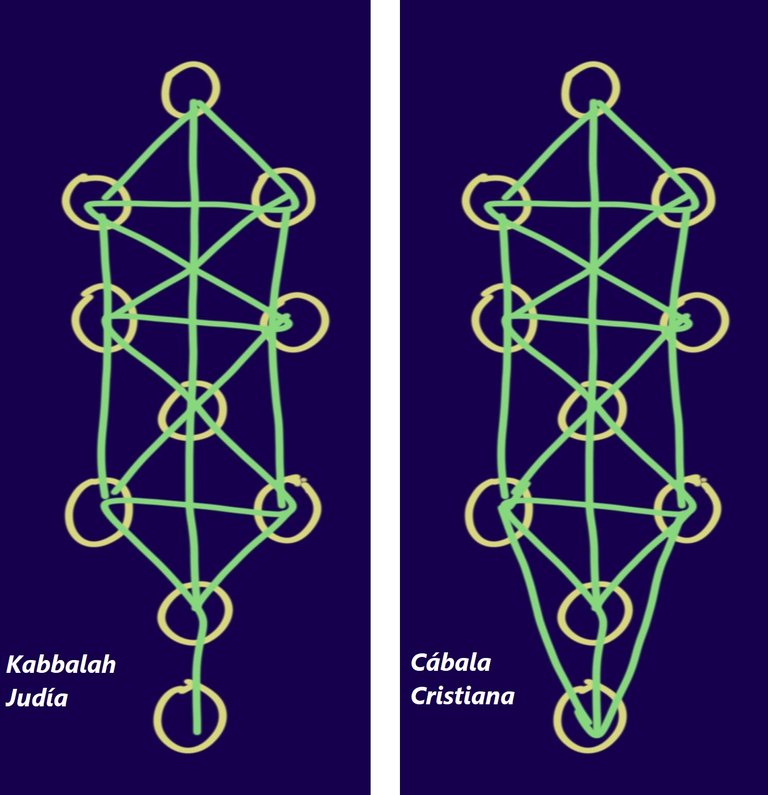
El origen de este Árbol de la Vida proviene de los orígenes místicos del judaísmo. Está muy ligado al mundo judío, por lo que su fundamento principal estaría en el Antiguo Testamento. Sin embargo, también fue muy estudiado en el cristianismo en épocas medievales, aunque al parecer con una ligera modificación en el diagrama.
El Árbol de la Vida consiste en 10 "esferas", interconectadas entre sí, con un orden especifico. El orden y significado de cada una de estas esferas se basa en el orden y en la sabiduría contenida en los escritos del Antiguo Testamento. Es algo un poco extenso y también podría ser para otra publicación, pero basicamente estas esferas representan atributos de Dios en cuanto a la creación del mundo y a nuestra realidad.
Para explicarlo en términos más sencillos, y con conceptos más familiares, podemos dividir el árbol en 3 partes:
Mundo superior
Las tres esferas superiores, que representan lo más elevado, son la representación de lo más divino, o algo así como la "energía" en estado puro ¿Recuerdan lo del diagrama de ingeniería? Es como la "central eléctrica".
El términos más familiares, seguramente no es la analogía más adecuada, pero podríamos tomar como ejemplo la famosa frase: "en el nombre del Padre, del Hijo, y del Espíritu Santo...". Quizás lo más adecuado sería describirse como: El Todo o Dios en lo más alto, y luego, sus "atributos" de sabiduría y de fuerza creadora.
Click here for the English Version
The origin of this Tree of Life comes from the mystical origins of Judaism. It is closely linked to the Jewish world, so its main foundation would be in the Old Testament. However, it was also widely studied in Christianity in medieval times, although apparently with a slight modification in the diagram.
The Tree of Life consists of 10 "spheres", interconnected with each other, in a specific order. The order and meaning of each of these spheres is based on the order and wisdom contained in the Old Testament writings. It is a bit extensive and could also be for another publication, but basically, these spheres represent attributes of God regarding the creation of the world and our reality.
To explain it in simpler terms, and with more familiar concepts, we can divide the tree into 3 parts:
Upper world
The upper three spheres, which represent the highest, are the representation of the most divine, or something like "energy" in its pure state, remember the engineering diagram? It's like the "power plant".
In more familiar terms, it is surely not the most appropriate analogy, but we could take as an example the famous phrase: "in the name of the Father, the Son, and the Holy Spirit...". Perhaps it would be more appropriate to describe it as The All or God at the highest, and then, his "attributes" of wisdom and creative force.
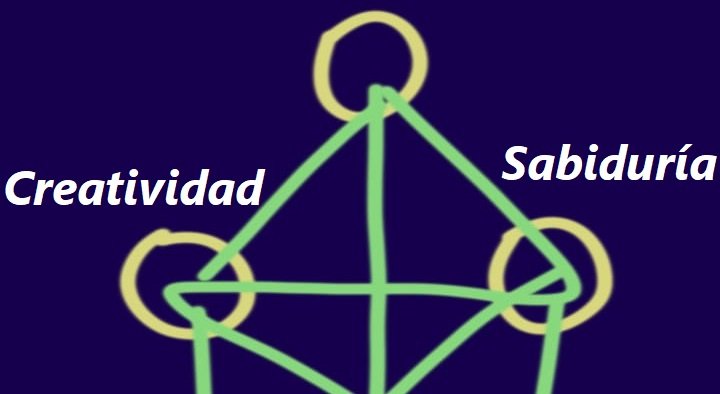
Mundo de formación
Son las 6 esferas centrales. Esta es seguramente la parte más crítica para nosotros como seres humanos. La "Formación" representa cómo dicha "energía" empieza a filtrarse para formar la realidad. Se se asocia mucho a lo emocional, pero no tanto desde el punto de vista psicológico sino como nuestra fortaleza mental o espiritual.
Cada una de estas seis esferas se le suele asociar con un personaje biblico del Antiguo Testamento. Abraham, se le asocia al amor o misericordia pura. Isaac, se le asocia al poder de ponerse límites, o la fuerza de voluntad. Jacob, se le asocia al equilibrio, la esfera central del conjunto, el dominio sobre todas las emociones. Moisés, la perseverancia y sabiduría para liderar. Aarón, el poder de las palabras y la quietud (o algo así como la humildad o "esplendor"). Y Joseph, el fundamento o conexión con la divinidad por sobre lo profano o el ego.
Esto es (más o menos, a grosso modo y simplificadamente) lo que representarían estas 6 esferas asociadas a nuestra fortaleza emocional para formar la realidad.
Mundo físico o de acción
La esfera inferior representa la materialización de toda esa energía, finalmente en el mundo físico y en nuestras acciones. Se le suele asociar al personaje bíblico del Rey David, y su poder sobre su propio reino.
Click here for the English Version
World of formation
These are the 6 central spheres. This is surely the most critical part for us as human beings. The "Formation" represents how that "energy" begins to filter through to form reality. It is very much associated with the emotional, but not so much from a psychological point of view but as our mental or spiritual strength.
Each of these six spheres is usually associated with a biblical character from the Old Testament. Abraham is associated with pure love or mercy. Isaac is associated with the power to set limits or willpower. Jacob is associated with balance, the central sphere of the whole, the dominion over all emotions. Moses, perseverance, and wisdom to lead. Aaron, the power of words and stillness (or something like humility or "splendor"). And Joseph, the foundation or connection to divinity over the profane or ego.
This is (more or less, roughly and simplistically) what these 6 spheres associated with our emotional strength would represent to form reality.
Physical or action world
The lower sphere represents the materialization of all that energy, finally in the physical world and our actions. It is often associated with the biblical character of King David and his power over his own kingdom.
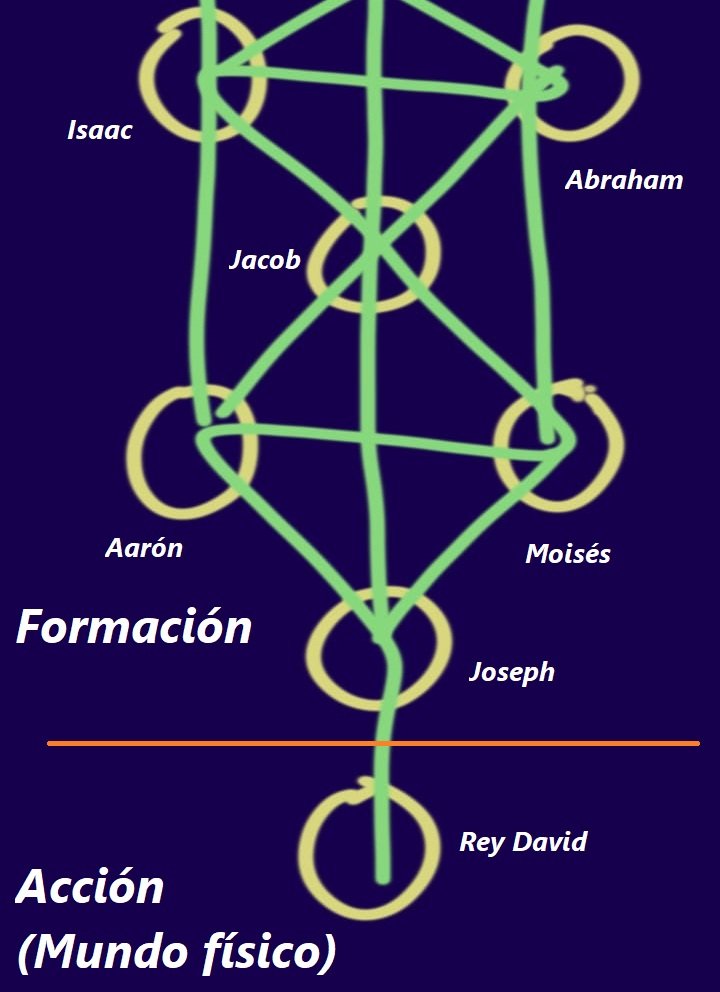
Esto le da una nueva dimensión a la Biblia, más allá de un escrito lineal, a un plano o diagrama sobre cómo funciona nuestra alma, y cómo nos relacionamos con el mundo. Todo esto es estudiado más profundamente en la kabbalah, la parte mística o esotérica del judaísmo, pero también ha influenciado muchas otras corrientes, e incluso ha aparecido este símbolo en un anime reciente (Evangelion).
La manera en que se unen estas esferas depende de cómo o quien las dibuje, pero una diferencia que supuestamente existe entre el Árbol de la Vida estudiado por los cristianos medievales (cábala cristiana) y el del judaísmo es que en el cristiano la esfera inferior también se une con las dos esferas más inferiores de ambos lados ¿Porqué? Son detalles que aún desconozco.
Puede que sea mencionado sólo 2 veces de manera literal en la Biblia, pero así como se habla de la caracterización de todos estos personajes bíblicos, también existen muchas referencias numéricas y simbólicas a lo largo de toda la Biblia: 10 "cosas", 10 mandamientos, 6 días de creación y 1 de descanso, Dios hablando "consigo mismo" en el Génesis (La "sabiduría" y la "fuera creadora"...), etc.
Click here for the English Version
This gives a new dimension to the Bible, beyond a linear scripture, to a blueprint or diagram of how our soul works, and how we relate to the world. All this is studied most deeply in kabbalah, the mystical or esoteric part of Judaism, but it has also influenced many other currents, and this symbol has even appeared in a recent anime (Evangelion).
The way in which these spheres are joined depends on how or who draws them, but a difference that supposedly exists between the Tree of Life studied by medieval Christians (Christian Kabbalah) and that of Judaism is that in the Christian one, the lower sphere is also joined with the two lower spheres on both sides, why? These details are still unknown to me.
It may be mentioned only 2 times literally in the Bible. Still, as well as the characterization of all these biblical characters, there are also many numerical and symbolic references throughout the Bible: 10 "things", 10 commandments, 6 days of creation and 1 day of rest, God speaking "to Himself" in Genesis (The "wisdom" and the "creative force"...), etc.
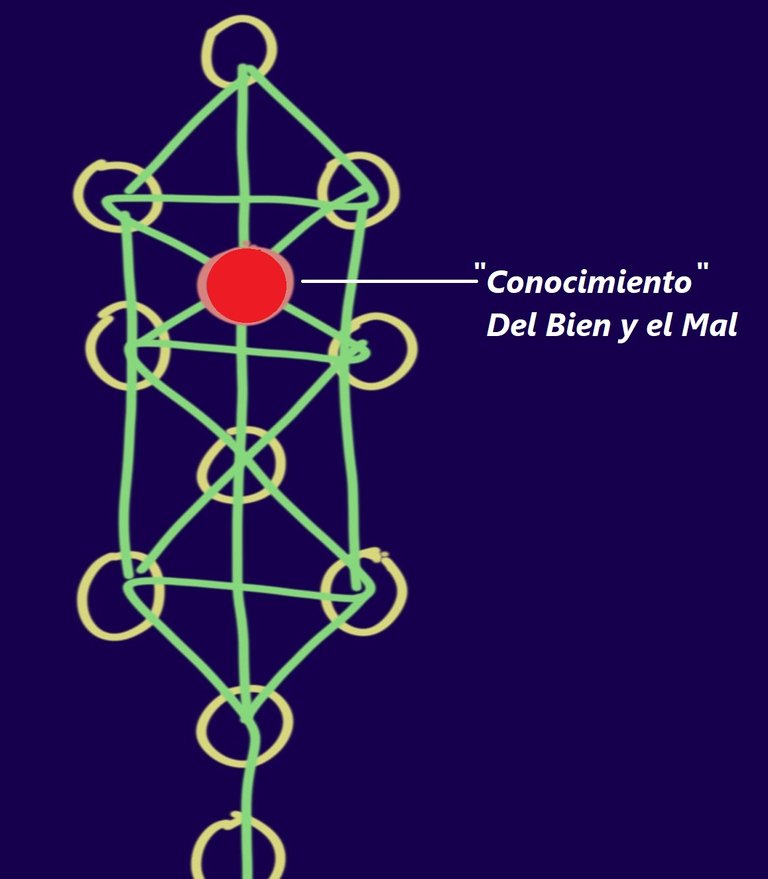
Son 10 las esferas, pero a veces se habla de una onceava pseudo-esfera, que se ubica entre las 3 de arriba y el resto. Esta esfera se le suele asociar al conocimiento, y no es negativa en sí, pero el ser humano es capaz de hacer "mal uso" de ella, alterando o "envenenando" sus 6 esferas emocionales. La percepción del bien y el mal, a través del conocimiento. Usar el conocimiento para hacer mal, o usar mal el conocimiento. Esto agrega un punto de "falla" en el árbol ¿No parece una manzana...?
Gracias por visitar mi blog... ¡Hasta la próxima!
Click here for the English Version
There are 10 spheres, but sometimes we talk about an eleventh pseudo-sphere, which is located between the 3 above and the rest. This sphere is usually associated with knowledge and is not negative in itself, but the human being is capable of "misusing" it, altering or "poisoning" its 6 emotional spheres. The perception of good and evil, through knowledge. Using knowledge to do evil or misusing knowledge. This adds a point of "failure" in the tree Doesn't it look like an apple...?.
Thanks for visiting my blog... See you next time!
También, te invito a visitar la siguiente publicación: Una simple interpretación gráfica del nombre de Dios יהוה 📖👑.
Translated to English language with the help of DeepL.com
Imágenes creadas mediante la App Sketchbook.
Otras redes sociales:
 |
 |
 |
F1 & motorsports: @acontmotor
Expresión Creativa. Literatura | Entretenimiento | Arte: @acontblog
| ¡Gracias por visitar! — ¡Thanks for visiting!  |
